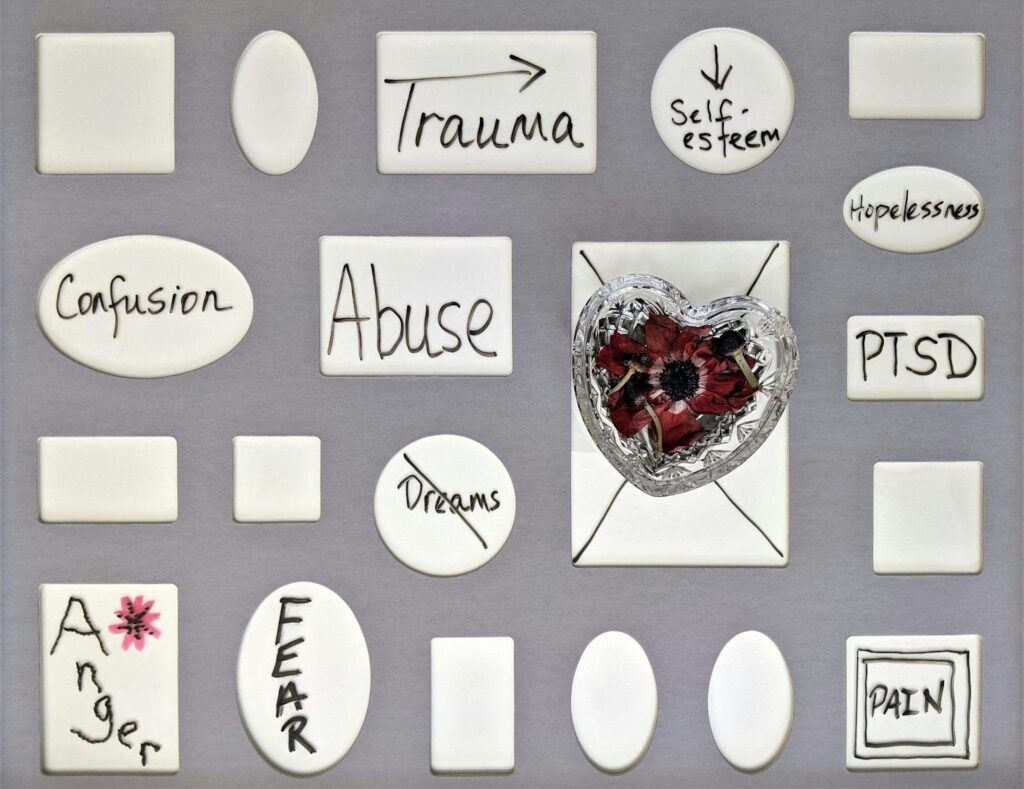Traumatic invalidation is a critical concept for therapists working with LGBTQIA+ clients, emphasizing the need for awareness and sensitivity towards the unique challenges faced by this community. This article explores the essence of traumatic invalidation, its effects on LGBTQIA+ individuals, and the role of therapists in creating affirming and supportive therapeutic environments.
Defining Traumatic Invalidation
Invalidation, a common term in therapy, refers to the dismissal or rejection of an individual’s feelings, experiences, or identities. Traumatic invalidation, however, goes beyond everyday invalidation, encompassing situations where these denials result in significant emotional distress and psychological harm. As defined by Marsha M. Linehan, the pioneer of Dialectical Behavior Therapy (DBT), traumatic invalidation involves the “extreme or repetitive invalidation of individuals’ significant private experiences, characteristics identified as important aspects of themselves, or reactions to themselves or to the world” (Linehan, 2015). This phenomenon is particularly relevant to LGBTQIA+ individuals, whose identities are often invalidated by societal norms, cultural messages, and systemic oppression.
Sources and Nature of Traumatic Invalidation
Traumatic invalidation can target various aspects of an individual’s existence, including their understanding of themselves, their environment, beliefs, emotions, actions, desires, and sensory experiences (Linehan, 2015). Sources of such invalidation can be diverse, including family members, peers, intimate partners, colleagues, institutions (like schools and healthcare systems), and broader cultural forces such as systemic racism, sexism, heterosexism, and transphobia (Harned, 2022).
The environment becomes invalidating when it sends messages that an individual’s emotions, experiences, or identities are fundamentally wrong, leading to emotional distress and psychological harm (Harned, 2022). This invalidation is not merely a disagreement or misunderstanding but a negation of the person’s core sense of self and identity. According to Harned (2022), these experiences can be profoundly traumatic when they are perceived as intensely painful and have lasting adverse effects on the individual’s self-concept and functioning.
Types of Invalidating Behaviors
Invalidating behaviors are varied but share a common theme of undermining an individual’s sense of self and conveying that they are “bad, wrong, unacceptable, and unwanted” (Harned, 2022). Traumatic invalidation can occur at any stage of life and be perpetrated by different people or entities. It often involves repeated discrimination based on one’s identity or personal characteristics (Harned, 2022).
Such behaviors can include unequal treatment, criticism, emotional neglect, ignoring, misinterpreting, controlling, blaming, excluding, and denying reality (Harned, 2022). These actions often lead to the individual’s response being invalidated, with perpetrators dismissing their reactions as overly sensitive or denying the invalidation altogether (Harned, 2022). The cumulative effect of these behaviors can significantly damage an individual’s sense of self, leading them to believe they are “unacceptable, unlovable, unimportant, incompetent, inferior,” and do not belong (Harned, 2022).

Clinical Considerations of Traumatic Invalidation
Traumatic invalidation manifests in various clinical indicators, including intrusive thoughts, re-experiencing the invalidation, shame, confusion, defensiveness, heightened sensitivity to further invalidation, and efforts to seek validation from the invalidator or others (Linehan, 2015; Harned, 2022). While not explicitly recognized in the DSM-5 criteria for PTSD, the symptoms of traumatic invalidation often overlap with those of PTSD.
The DSM-5 criteria for PTSD require exposure to events involving death, serious injury, or violence, or the threat thereof (American Psychiatric Association, 2013). In some cases, traumatic invalidation may occur in conjunction with such Criterion A events, leading to PTSD (Harned, 2022). Research suggests that traumatic invalidation can impact mental health as significantly as events meeting the criteria for PTSD (Mechanic et al., 2008; Spinazzola et al., 2014).
Experiences and Effects of Traumatic Invalidation
The impact of traumatic invalidation on individuals can be profound, often leading to chronic self-invalidation. This self-invalidation mirrors the external invalidation they have experienced, manifesting as self-criticism, ignoring one’s needs, self-blame, and minimizing achievements (Harned, 2022). Individuals might also doubt their decision-making abilities, leading to over-reliance on others and a lack of trust in themselves. This mistrust can manifest as fear of responsibilities, dependence on others’ behaviors, and a disconnection from one’s intuition.
Some individuals cope with traumatic invalidation by becoming perfectionistic and strict about their behavior, setting unrealistic standards that inevitably lead to feelings of failure and further self-invalidation (Harned, 2022). This can create anxiety in relationships, making it difficult to trust others and anticipate abandonment or invalidation. Individuals may mold themselves inauthentically, prioritize others’ needs, and seek constant reassurance (Harned, 2022). The chronic message that they are unacceptable can lead to feelings of inadequacy, fear of taking up space, and questioning their own existence.
Societal Contributions to Traumatic Invalidation
Traumatic invalidation often stems from societal prejudice, discrimination, and a lack of understanding of diverse gender and sexual identities (Harned, 2022). Society’s adherence to heteronormative and cisnormative standards invalidates the experiences of LGBTQIA+ individuals, leading to feelings of invisibility and marginalization. The assumption that heterosexual and cisgender identities are the norm can be profoundly traumatic for queer and trans individuals (Meyer, 2003).
LGBTQIA+ individuals also face microaggressions, subtle but impactful expressions of invalidation that communicate hostile or derogatory messages about their identity (Harned, 2022; Sue et al., 2007). Additionally, systemic failures to protect LGBTQIA+ rights contribute to their invalidation and marginalization (Harned, 2022). Barriers in healthcare, employment, and housing exacerbate trauma and distress, reinforcing negative assumptions about their identities and increasing emotional dysregulation and trauma-related distress (Haltzenbuehler, 2009).
Research consistently indicates that traumatic invalidation related to race, ethnicity, sexual orientation, and gender identity can lead to PTSD symptoms (Bandermann & Szymanski, 2014; Pieterse et al., 2010; Reisner et al., 2016). Societal norms and prejudices create an environment where the experiences of LGBTQIA+ individuals are negated, resulting in emotional turmoil and psychological trauma. Therapists play a crucial role in understanding these nuances and creating affirming therapeutic spaces.
Addressing Traumatic Invalidation in Therapy
Creating a validating and affirming environment is essential for therapists working with LGBTQIA+ clients. Recovering from traumatic invalidation requires the right support, which is where therapeutic intervention comes in.
Strategies for Therapists
- Cultivate Cultural Humility: Educate yourself about LGBTQIA+ experiences, terminology, and challenges. Understanding the unique stressors faced by LGBTQIA+ individuals will enhance your ability to provide effective support.
- Validate Experiences: Affirm clients’ emotions, experiences, and identities. Demonstrate empathy and understanding, validating their feelings and perspectives.
- Challenge Biases and Microaggressions: Be aware of your own biases and challenge microaggressions that you may unintentionally perpetrate during sessions. Promote a safe space for clients to share their experiences openly.
- Advocate for Clients: Be an advocate for your LGBTQIA+ clients both within and outside of the therapy room. Support their access to resources and work towards creating a more inclusive society.
Therapeutic Techniques
- Mindfulness and Emotion Regulation: Techniques like mindfulness can help clients process and manage emotions stemming from traumatic invalidation. These practices foster a sense of safety and understanding in the therapy room.
- Exposure Techniques: Gradual exposure to invalidated emotions within a supportive therapeutic context can help clients confront and process their experiences (Harned, 2022).
- Fact-Checking and Cognitive Restructuring: Helping clients challenge unhelpful trauma-related beliefs can reduce the likelihood of re-experiencing invalidation. This involves checking facts and restructuring cognitive distortions related to their experiences (Harned, 2022).
- Building Resilience: Encourage clients to increase involvement in pleasurable activities and stay mindful of daily life demands. This can help build resilience against stress and trauma (Linehan, 2015).
- Preparing for High-Stress Situations: Help clients anticipate and prepare for high-stress situations, especially those involving potential invalidation. This includes rehearsing how to leave safely and coping strategies in advance (Harned, 2022).
Traumatic invalidation significantly impacts the mental health and well-being of LGBTQIA+ individuals. As therapists, it is our responsibility to understand these effects and create therapeutic spaces that are validating, empathetic, and supportive. By affirming clients’ emotions and experiences, challenging biases, advocating for their rights, and employing effective therapeutic techniques, we can help LGBTQIA+ individuals heal from the profound impacts of traumatic invalidation and build resilience for a healthier, more authentic life.

